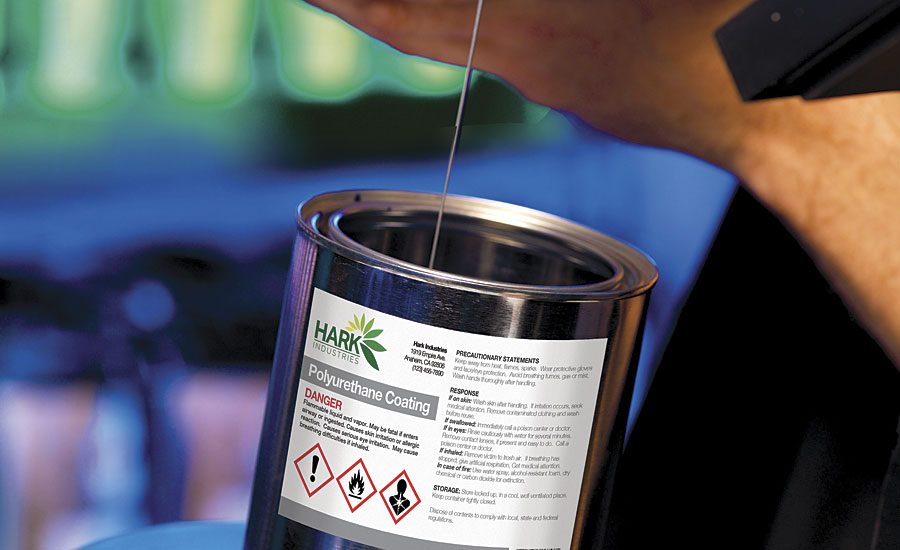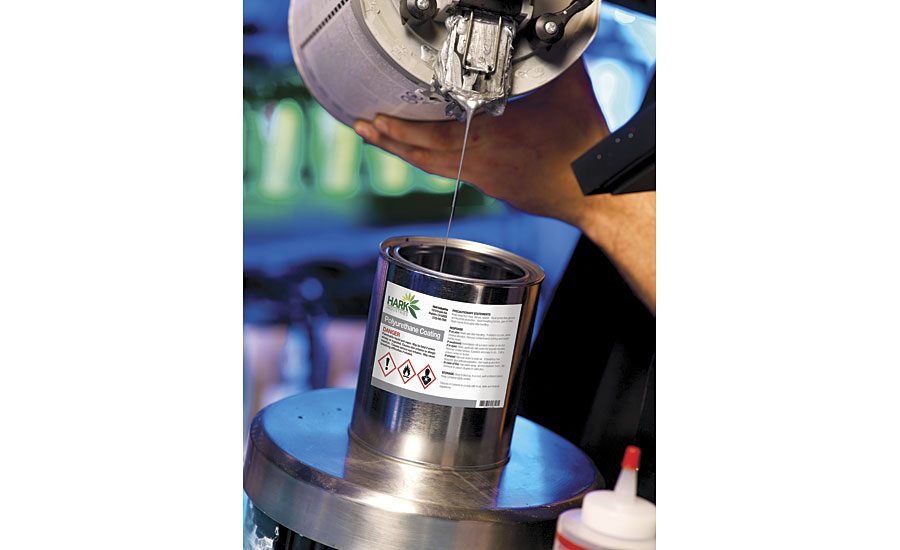Easing the Transition to GHS Label Compliance




Paint and coating formulators, distributors and end users must now ask if their chemical labels are GHS compliant – and if not, be prepared to document for OSHA their good faith efforts to become so, including an expected timeline for reaching compliance. The industry will also need to determine how to integrate such compliance with the American Coatings Association’s Hazardous Materials Identification System (HMIS®).
The Globally Harmonized System (GHS) was established by the United Nations to create a unified system for identifying and communicating hazardous chemicals. In the United States, OSHA set a June 2015 deadline for chemical manufacturers to use GHS-compliant labels, followed by a December 2015 deadline for distributors and June 2016 deadline for end users.
As such, paint and coating formulators must re-classify any products containing hazardous chemicals based on a common chemical classification system defined by GHS. They must update their safety data sheets and use GHS-compliant labels to identify their hazardous chemicals.
Paint and coating importers and distributors, in turn, must ensure that any products with hazardous chemicals they sell have GHS-compliant safety data sheets and GHS-compliant labels.
Employers with any paints or coatings containing hazardous chemicals in the workplace, for their part, must ensure they have safety data sheets and labels for their exposed workers, and train them to handle the chemicals properly.
On each GHS label, six specific items of data are required: Product Name or Identifier; Hazard Statement; Signal Word; GHS Pictogram Symbols; Precautionary Statement; and Supplier Information. Instead of the familiar black and white pictogram symbols previously used in safety labeling, Environmental Health and Safety (EHS) managers must realize that GHS labels now require pictogram symbols that convey hazard information with a red diamond border.
For those currently using HMIS labels for in-plant containers, related written documentation and training, the question is how to achieve GHS compliance and integrate it with HMIS, which has been an industry standard for decades. Though differences exist in the two systems, such as opposite numbering for the level of hazard, OSHA allows employers to use HMIS in the workplace as long as it is consistent with GHS (HCS 2012) and workers are properly trained for GHS.
Implementing GHS labeling can seem daunting, particularly to small- and medium-sized businesses, but it does not have to be. While large organizations can hire integrators to automate GHS software with a bank of printers tied into high-end ERP infrastructure, small- and medium-sized businesses do not require this approach.
Industrial-Grade, GHS-Compliant Labels
Instead of investing in costly dedicated printer/label/software systems, small- to medium-sized companies are easing the transition to GHS label compliance. More are turning to flexible, lower-cost options, such as industrial-grade labels that allow printing durable GHS, HMIS or hybrid labels on demand with existing laser printers and certain inkjet printers.
While Avery has been a leading label brand in the office market for decades, it has just recently expanded into the paint and coatings industrial market and developed industrial-grade labels designed to be GHS compliant, such as its UltraDuty GHS Chemical Labels.
Unlike standard labels, industrial labels are used in harsh environments like warehouses, manufacturing facilities and in the field, so they must be very durable and able to withstand exposure to chemicals, abrasion, tearing, moisture, sunlight and extreme temperatures.
The challenge, however, is that to be GHS compliant, labels must stay reliably affixed without fading or becoming unreadable despite harsh indoor or outdoor conditions, including international shipping. This requires not only a durable label substrate but also a marine-grade adhesive.
As such, Avery designed its UltraDuty GHS Chemical Labels to meet the most rigorous GHS requirements. The durable, synthetic labels are chemical, tear and abrasion resistant, and are constructed with a marine-grade adhesive that is waterproof and passes a 90-day seawater submersion adhesion test. Unlike typical labels, which crack and harden in harsh conditions, they are UV resistant with 2+ years of outdoor UV life. They are also temperature resistant, can be applied as low as 10 °F, and used as high as 220 °F in the field when printed from color laser printers, or 300 °F when printed from inkjet drum label printers.
The GHS and HMIS labels are available in a range of sizes to fit drums, totes, pails, cans, jugs, containers and even small bottles. They can be applied to a variety of surfaces such as metal, plastic, glass, ceramic, polycarbonate, painted surfaces and more. Similar to Avery’s office labels, the GHS and HMIS labels retain Easy Peel, smudge-free and jam-free capability.
For labeling that requires the durability of extra lamination, the company also offers Easy Align Self-Laminating ID Labels, which come with a clear laminate so no lamination machine or additional layer of tape is needed. The material is UV and water resistant, and resists scuffing, tearing and smudging, making them ideal for use in warehouses, storage areas and worksites.
Label-Printing Software
To help small- and medium-sized organizations print GHS and HMIS labels from their existing printers on demand, some companies provide label-printing software along with their labels. The Avery Design & Print GHS Wizard makes it easy for employees to create and print their own GHS and HMIS labels from pre-designed templates. They can also create them step-by-step on demand at their desk, and even create GHS and HMIS hybrid labels capable of satisfying both systems. Most employees will find the process intuitive, since it resembles creating an office document from pre-designed templates.
The free software includes all the pictograms and GHS-compliant statements needed for GHS labeling; easy insertion of company logo or other images; customizable text; simple generation of 18 types of barcodes; and a sequential numbering feature to add lot numbers or other variable data.
No download is required since the software operates from Avery’s website, and GHS and HMIS labels can be securely saved online or to a computer. Besides GHS-compliant labels, the software is also capable of printing other safety labels such as NFPA, OSHA, ANSI and DOT labels.
Helping Companies Stay Compliant
To help companies stay compliant for GHS, HMIS and other regulatory situations, including OSHA safety communication, Avery has partnered with RightAnswer, a chemical compliance and information specialist. Through a portal in Avery’s website, RightAnswer offers comprehensive online access to over 100 proprietary, government and EHS data sources with over 11 million documents covering more than 400,000 chemical substances, all integrated and available through a single interface.
“Staying GHS compliant will not only help paint and coating industry organizations avoid OSHA fines, sanctions or auditing, but also will help them open new global markets since GHS is a global standard,” says Glen Markham, Vice President of Business Development at RightAnswer.com, Inc.
Markham notes that remaining GHS label compliant depends on the durability of the appropriate label substrate, getting the label content right and effective document management.
“For paint and coatings-related companies that keep asking EHS managers to do more with less, Avery’s partnering with RightAnswer can help them stay not only GHS and HMIS label compliant, but also up to date on the chemical issues they’re concerned about,” says Markham.
For more info, visit www.avery.com/GHS.
Looking for a reprint of this article?
From high-res PDFs to custom plaques, order your copy today!










